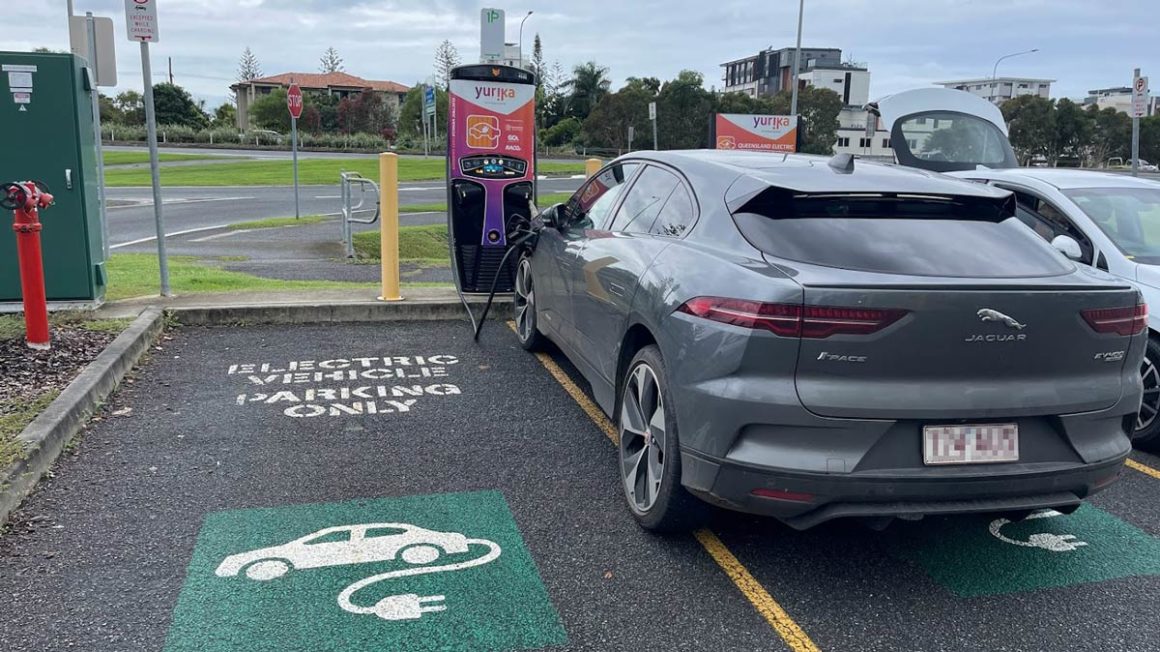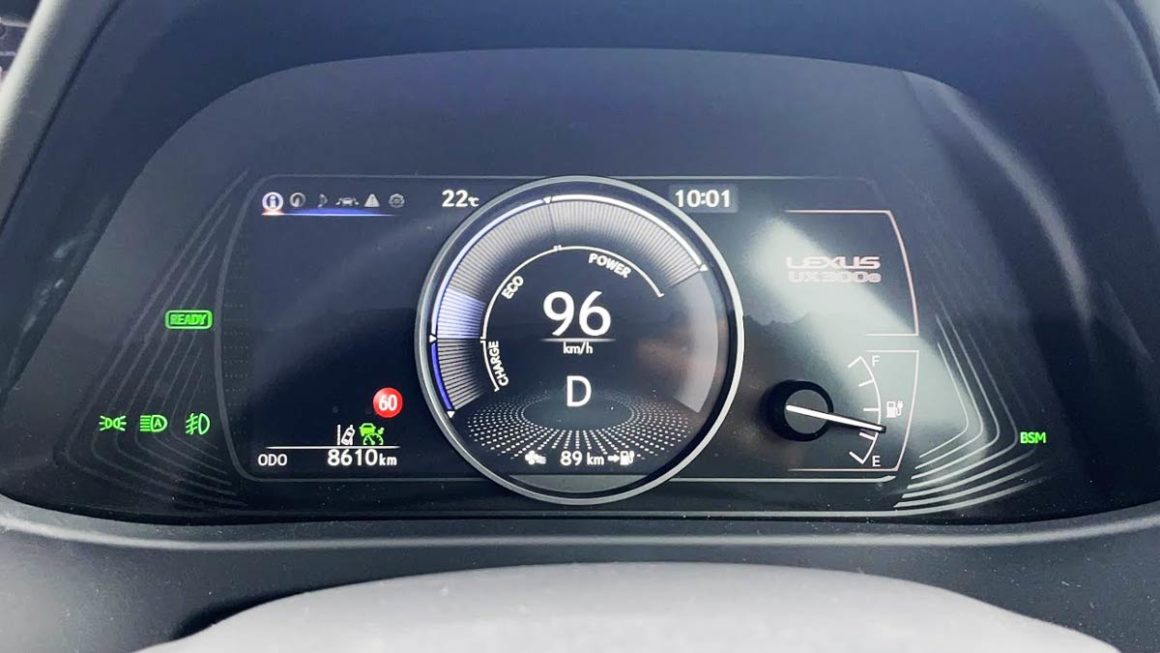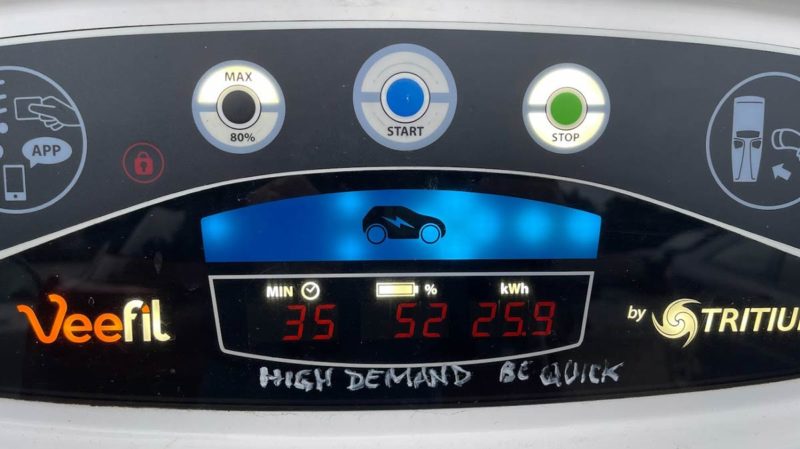A recent road trip in a short-range electric vehicle in early May has painted a timely picture of the recent difficulties the EV industry is experiencing.
My experience was driving the first fully electric vehicle from Toyota’s luxury brand Lexus, the ux300e.
First up: it wouldn’t be fair to lay the blame of this particular road trip at the feet of Lexus. There are other short-range EVs on the market, and the question of the Lexus EV’s target market and market positioning is another discussion entirely.
Rather, this experience is a result of three things.
One, increasing EV ownership is placing more demand on public chargers. Secondly, a distinct disinterest (nay, hostility) from the Coalition government towards EV uptake resulting in slow roll out of chargers.
And thirdly, a global supply chain shortage is placing pressure on charging networks.
EV owner and network frustrations
EV drivers have been expressing frustration at the number of EV chargers that are out-of-order or inaccessible. The Driven has reported recently on this here and here.
See: Why are so many EV charging stations out of order? Are they reliable? And: “Beyond a joke” Number of busted EV chargers causes concern as uptake jumps
The reasons may vary and the time a charger is out of action differs depending on the problem. However, the problem for the driver remains the same: they often find they cannot charge.
EV charging networks have expressed their own frustration at one of the causes. They say it is out of their hands, blaming the root of the cause on the global supply chain shortage.
Don’t mistake this for the experience of someone who has never driven an EV before. Or, for someone who has decided to take a long-distance trip in a vehicle or on a route that is not (currently) feasible.
This author has driven this particular route (Northern Rivers NSW to Brisbane) in the majority of EVs on the local market. I am also au fait with the ins and outs of EV charging.
But, with the number of out of action chargers is increasing demand at working ones, it is not surprising I ran into problems.
High demand – be quick
I had not – as I usually would – charged at home before leaving. This was due to a steep driveway, a lot of rain and the fact this was not my car (it was a media loan). So, I started out the journey with about 160km on the battery.
As it happens it is about 159km to where I needed to return the car. So, I figured the trip would be a good trial run on needing to use fast-chargers along the way to get there.
First, I headed to the local NRMA charger at The Farm outside Byron Bay to get a free top-up. Arriving at The Farm, I find that one of the two chargers is out of order. At least there are two charger units, so that if one is broken there is another to use.
It turns out this has been the case for some time. So, some bright spark as written in indelible texta: “High demand – be quick!”
However, this morning there is a Tesla that has clearly parked in front of the broken charger while it waited for whoever was using the working charger to move on.

With that EV moved on, they’ve now plugged in. Unfortunately, this driver isn’t aware they can check in on Plugshare to let other EV owners when they’ll be back (or forgot, or was in a rush.)
Unfortunately, they didn’t come back to their vehicle within half an hour. Nor had they thought to hit the maximum 80% charge button on the charger. There was no way of knowing when they would be back.
While waiting, another electric car owner pulled up in a Hyundai Ioniq Electric which also is a small short-range vehicle.
I had 128 kilometres left on the battery and the next charger was 41 kilometres away. So I hopped out of the car to let the owner know that I will move on and she can take my place in the queue.
She was thankful, commenting that she needed to charge at that location as the Ioniq Electric didn’t have enough range to get her home.
A fuel gauge in an EV?
Yes, the Lexus UX 300e has a fuel gauge. It does also state range at the bottom of the screen display. But, the fuel gauge is not helpful with the nagging feeling of range anxiety. As it quickly depletes on the drive I am thrown back to times at university hoping I had enough fuel to get to the next petrol station.
Next stop is the Yurika charger installed by the Queensland government near Coolangatta airport. I arrive to find a Jaguar i-Pace plugged in, and parked crookedly to boot.
There is just one charger at this location, and the owner of the Jaguar has not checked in to Plugshare either. It turns out there is already a brand new owner of a Hyundai Ioniq waiting to use the charger. While we get chatting another EV owner turns up in a Nissan Leaf she has owned for just a few months.

As I’m heading north and they both need to use this charger I say my goodbyes. I have just under 90km left on the battery, and know I have the option of using the Evie Networks charger at Coomera 54km away, but I would prefer to find a charger sooner.
Whichever I get to, I will have to wait to use it if it is already in use.

EV charging success
I end up driving to the Yurika charger at Helensvale, which is thankfully not in use, partly because it not in such a convenient location as the Coolangatta and Byron Bay chargers.
But, it is also down the far end of the train station carpark. It doesn’t feel like a safe location if charging at night.

That said, it is near a shopping centre. And, most importantly, a cafe with a powerpoint in the back corner near a table. The staff are happy for me to plug in there so I can work and have some lunch while I wait.
After a leisurely 40 minutes, the Lexus is charged up to 90%. Disappointingly this gives it just 265 kilometres of range. This puts the circa $80,000 EV very squarely in the short-range electric car sector.
Still, it is enough to get me to my destination and so on I go.

EV industry growing pains
It’s important to note this article is not trying to dissuade drivers from buying EVs.
As transport emissions account for around 20% of our carbon emissions, I do believe EVs have an important role to play in decarbonisation. So do other forms of transport, especially those that don’t need any kind of fuel other than that burnt in our bodies: walking, cycling and so on.
Nor should drivers be dissuaded from buying shorter-range EVs which are within their budget. They are perfectly suitable for day to day use but may require a little more planning for longer trips. (Public fast-charger networks, by the way, plan to be 150k-200km apart.)
In short, the problem is all the more noticeable because there are far less chargers than there are bowsers at petrol stations.
The number of EV chargers are increasing. For example, the NSW government has recently announced more funding for destination-based charging which should help take pressure off public fast-charging.
It is also true that most of the time people will probably charge EVs at home, if they can. But it is also true there are times when access to a suitable charger in a suitable location is really, really, important.
See also: What happens when an EV charger is out of order?

Bridie Schmidt is associate editor for The Driven, sister site of Renew Economy. She has been writing about electric vehicles since 2018, and has a keen interest in the role that zero-emissions transport has to play in sustainability. She has participated in podcasts such as Download This Show with Marc Fennell and Shirtloads of Science with Karl Kruszelnicki and is co-organiser of the Northern Rivers Electric Vehicle Forum. Bridie also owns a Tesla Model Y and has it available for hire on evee.com.au.


